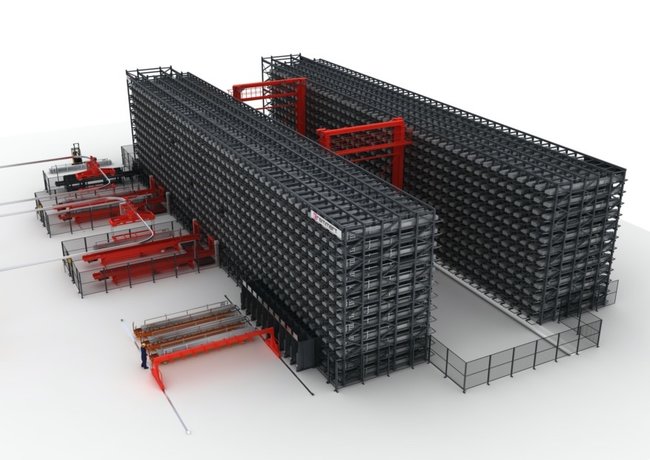1. Specifically detecting optimization potential within the flow of goods
Those who want to effectively integrate automation into operational processes, should carefully examine the entire process starting with the delivery of goods. Many companies already have a need for optimization in the course of the first steps: The delivered material is often initially placed somewhere haphazardly and then, eventually placed in storage, where there happens to be room. However, this type of floor storage is not the most suitable method, to ensure an efficient flow of materials. Instead, it would be better to examine every possible storage system individually and to determine which type of storage is consistent with the company’s delivery point, the material and also the subsequent steps regarding further processing. The following rule of thumb applies: There should be the shortest time possible between delivery and warehousing. For an ideal flow of materials, each item to be stored must be transferred to a load carrier upon delivery, which moves it directly and automatically to its designated space. Another crucial aspect, which has optimization potential in many places, is the use of available space. When planning automated solutions, tailoring to the local conditions pays off. The most important issue in this context: Optimization of the connection of machinery. In many cases, existing installations are not integrated into the processes in a manner, which enables them to achieve the best possible results when interacting. This is especially the case, where entrenched habits and traditional concepts pertaining to the flow of materials are ever-present, although they no longer benefit production. In this case, it is imperative that companies implement a new material flow concept.
The option of integrating processing machinery independent of the manufacturer provides the user with the highest level of flexibility. Even as early on as during the planning phase. In this case, focus is placed on the specific requirements of the company and the production. Customers choose the machinery that meets their needs, material handling experts such as Remmert provide for the smooth connection. Another advantage of manufacturer-independent integration: absolute long-term sustainability. The replacement of the machinery as well as an expansion of the installation can be realized in a modular manner. This ensures that the installation can be adapted to the current production requirements at any time.
2. Assessment of the suitable degree of automation
Whether die-cutting or laser systems, sawing machines in the area of long goods or tube laser cutters – the materials must be removed from storage and transported for further processing quickly and efficiently. In the process, it is essential to utilize the machinery at the best possible rate, without any downtime. An individual assessment enables determining the degree of automation (full or semi) and integrating the suitable solutions into the existing flow of materials in a useful way. Automation units, which can be connected flexibly and integrated independent of the manufacturer, also offer the possibility of adapting the system to the current conditions in the future and expanding it accordingly. Here, priority is given to customer-specific requirements and goals as well as the selection of suitable solutions, which can run solely in fully automatic mode or even flexibly in semi-automatic mode. By using modular components such as the FLEX family from Remmert for instance, systems can be expanded in a flexible manner. Therefore, the solution for the flow of materials can grow with the production requirements in regard to capacity and degree of automation.
3. Selecting the best type of storage for materials and production
Which type of storage is best suitable for the precise conditions on location is usually already determined during the first planning meeting and the customer’s goals. The quantity of stored goods, the existing storage space and the material requirements for production are decisive target variables. These factors determine the size of the warehouse and the required speed of the automation solutions. Furthermore, the subsequent further processing of the materials must be taken into consideration. For example, if a machine is connected for production purposes, the warehouse should enable the use of a semi- or fully automatic automation solution.
4. Get a holistic view of future requirements as well as expert advice
If financial figures and performance indicators do not show the desired results, a glance at the overall flow of materials is usually worth the effort. A multitude of problems is associated with the fact that companies do not attach enough importance to intralogistics. “When looked at more closely, the subject of material flow turns out to be extremely complex”, says Frank Baudach, Sales Manager DACH and Benelux at Remmert. “Therefore, it pays off for companies to get experts on board with know-how for the requirements of different materials. In the process, we support our customers with specific strategies, cost-benefit analyses and the respective foresight, to find suitable solutions, to implement measurable time and cost savings. At the same time, we work in accordance with the “one stop source” principle and with it, offer our customers all required services; from consulting services to implementation as well as long-term service from one source.”
